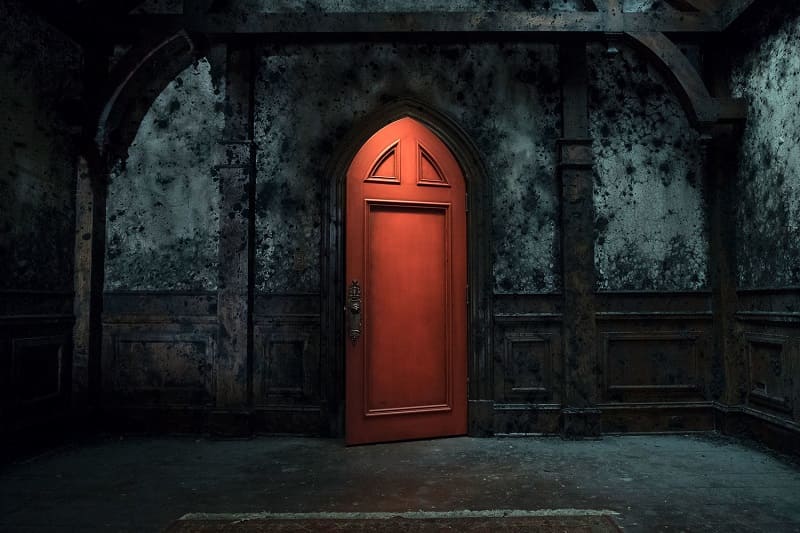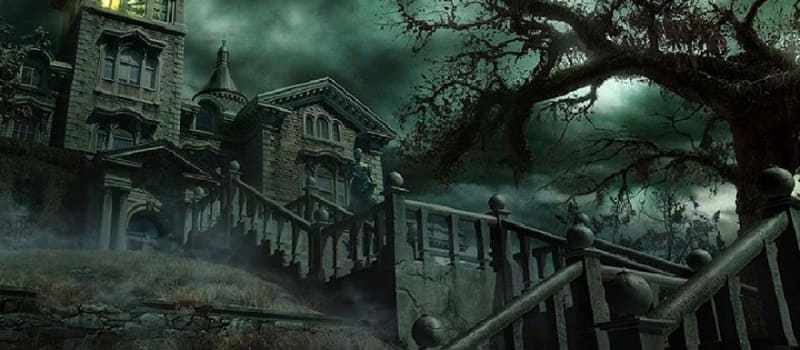Are you wondering how to write short horror stories? If so, then you’ve come to the right place for answers.
Writing a horror story doesn’t have to be a daunting task. With a few simple tips and tricks, you can craft a thrilling tale that will keep your readers on the edge of their seats. Write like experienced horror writers with this guide, whether you are writing about creatures from beyond the grave or just everyday horrors.
The horror genre seeks to conjure feelings of terror. At its best, it draws on dread in all its forms: pain, loneliness, illness, loss, and the unknown. This suspenseful storytelling style is what makes a horror tale so effective.
Let us take a deeper dive into how to write a horror story.
This blog covers the following topics:
- 5 basic blocks of a horror story
- What characterizes a compelling horror story?
- A step-by-step guide to writing a horror story
- How to keep your readers hooked on your horror story?
- Conclusion
What Are The Five Basic Blocks Of A Horror Story?
For every story to hit it off right away, one must consider including the five essential elements of a story. These elements are basic blocks of a horror story and tell horror book writers what to keep in mind while writing a horror novel. The likelihood of producing a best-selling horror story is high if you understand each element thoroughly.
The five basic blocks that are most frequently used in writing horror stories are as follows:
1. Characters
All of us know how imperative characters are for almost every story. Your story must have at least one lead character, while it can have as many supporting characters as you want. However, remember that every character must hold some significance and play a role in the plot.
A good horror story would include sufficient information about every character, like their backgrounds, personalities, conflicts, appearances, etc. It is important to provide readers with enough detail so they can imagine and relate to the characters, but not too much, as it could distract from the plot.
Lastly, do you know what lies at the core of a story? Character development! The main character faces multiple challenges and comes across life-altering choices, all of which help them grow, and this character development keeps the audience’s emotions intact with the story.
2. Setting
Mood, location, and time are all used to describe settings in stories. Location is the actual setting in which the tale is set. To make the readers feel like they are with the protagonists, it is a good idea to describe each new place in great detail.
Moreover, every story takes place in a specific era, while several periods can also be used in some stories.
The mood is the last element of the setting. What you want people to experience while reading your story is the mood. Do you want them to feel frightened, ecstatic, or joyful? It’s how you explain and characterize a particular place, thing, or person. The language used creates the atmosphere and ups the suspense in a tale.
3. Plot
The story’s overall theme is revealed in the plot. It may have several scenarios and encounters. A plot has a start, middle, and end in its most basic form. The characters are introduced at the beginning. The actual conflict happens in the middle. And all loose knots are tied up at the end with all disputes settled.
4. Conflict
Without conflict, a story is incomplete. In stories, conflict tests your characters’ endurance and compels them to grow. They can only develop and realize their full potential when facing challenges. Battles might be both internal and external or only one.
5. Resolution
This is where the core conflict is resolved. Without a solution, the conflict will never end, which can result in an unsatisfying conclusion to your story. A resolution can involve learning something new that completely alters everything.
Sometimes in stories, the conflict is not entirely resolved. This frequently results in cliffhanger endings when some aspect of the conflict is still present.

What Characterizes A Compelling Horror Story?
The finest horror stories combine the common with the alarming, the bizarre, and the ugly to appeal to our instincts. Fear is the primary theme of each successful horror story—while reading the story, the reader must feel terrified.
Good horror story writing should be frightful but also contain a realistic component.
The protagonists should be likable, the enemy should be terrifying, the location should be scary, and the ending should be startling.
A Step-By-Step Guide to Writing a Horror Story
Write a spine-tingling story that will leave your readers in amazement and dread by following these 12 simple steps for writing horror.
1. Brainstorm several ideas
Start by listing all the phrases and ideas that immediately come to mind when you think about terror. Horror is about fear; it’s about more than simply terrifying stories. So begin pondering the atrocities you witness around you and the things that keep won’t let you fall asleep. Try making a list of all your fears, even the ones that creep you out the most.
2. Build your idea from scratch
What disturbs you at night? The villainous creatures from monster films? An outbreak of a fatal virus? A terrible unsolved crime? Whatever it is, you can utilize it to write a terrifying story that will make your audience sweat buckets.
Take your thoughts and turn them into a horror story. After you have outlined the central concept, consider how you can make it scarier.
There are several methods to add suspense to the story. Try to imagine an everyday circumstance that everyone encounters and then imagine adding something appalling to it. Making your tale realistic is the key to making it frightening.
To put it another way, you want to make your story as convincing as possible.
3. Jot down your lead characters
List each of the story’s key characters. Give each character a unique personality if you have more than one. Ensure that each character acts in a way that reflects their personality and that they have a specific motivation for doing so.
Ensure that your plot has a few supporting characters and an antagonist—doesn’t have to be human. Your enemies are the bad guys or entities who keep you awake at night. They may be the unpleasant character, the murderer, the ghost, the vampire, the zombie, the criminal mastermind, the monster, or the evil spirits.
4. Create a spine-chilling setting
It’s crucial to get the setting perfect while writing a horror story. Consider any spooky locations you may be familiar with or have dreamed about. You might also relate the choice of your story’s leading setting to a prevalent phobia.
A haunted home, a spooky old mansion, graveyards, and even gloomy suburban villages are common settings for horror stories. Try to write a thorough description of the primary location, regardless of the set you choose.
5. Sketch the beginning paragraph
The first thing your readers will read is the introduction. It needs to be a teaser that establishes the mood of the story. To put it another way, the opening sentence should pique readers’ interest enough to keep them reading.
Writing an opener that provides the reader with a sample of the entire plot is crucial during this stage. Don’t provide too much information; a tinge of dread will do. The reader should be left wanting more by your writing.
6. Prepare for the grand climax
The climax is the point in the story where your main character faces off against the enemy or must confront their worst fear. Your goal with this stage is to keep your audience on the verge of their chairs.
Consider what will occur, who will be in danger, and what will happen while writing the climax. If you’re having trouble with the climax, start with a minor issue and gradually build up to the bigger one.
7. Concoct a twisted ending
The twist conclusion in a horror story is typically always a shocking revelation. It should always come as a surprise whenever the real villain is identified.
There are many ways to create a twist ending, but you should start with the slightly more obvious one. You might disclose the true identity of the antagonist or even the secret the main character has been keeping.
Alternatively, you may have the main character discover startling facts that influence them in very different ways.
8. Pick a spooky writing style
Naturally, horror fiction is written in a darker, more dramatic manner than other types of literature. However, writing horror involves more than just employing ominous language and graphic depictions of violent acts.
In this step, you should consider the actual writing of your chosen horror genre.
Which of the following perspectives would it be written: first, second, or third? Do you wish to adopt a more journalistic stance and document gruesome events? Or will you assume a more narrative angle, where the reader is standing outside and observing?
9. Compose your first draft
Now that you’ve reached this point, begin creating your horror story! After going through all these processes, you may have a basic idea for your story. Typically, the most crucial draft is the first one. Start writing your story even if you still need to finish the outline. Don’t bother about anything else; just start writing!
10. Proofread your draft
You may now begin revising your story because the difficult part is over! Read the story aloud to yourself a few times to get started. Mark the details of your story that require more explanation or improvement each time you read it.
Watch out for typos, grammatical errors, and strange-sounding statements simultaneously. After this evaluation, you may return to your story and make the necessary amendments.
The next step is to gather some feedback. It would be best if you had someone else read your work. So make sure that several individuals, each with a different viewpoint, read your story. You can make the necessary revisions after receiving the feedback.
11. Engage people with an intriguing title
Time to decide on a book title! This plays a significant role in a horror story. A strong title not only aids in giving your story a sense of identity but also informs the reader of the genre they will read.
There should be a strong hook in the title. It ought to be fascinating and slightly frightful. Consider what you enjoy reading if you need help coming up with an excellent book title. Are you interested in reading a scary book? Or would you want to read a novel about someone’s hardships?
12. Publish your horror story
Your book has been completed! It’s time to publish the first edition once you’ve written it, edited it, and gotten a critique. There are several options for book publication. The most often used technique is self-publishing it on Amazon by yourself or with the book publishing company. You may also collaborate with an experienced publisher to get your book published in stores.

How To Keep Your Readers Hooked On Your Horror Story?
If you want to write horror, there are several essential things to remember. A horror story is a creative genre with no defined guidelines. Any length and topic may be covered in an extraordinary horror story.
To get started in the genre, check out some helpful tips for writing horror:
Initiate with fear
Naturally, the main component of every horror story is the element of terror. People read horror to be enthralled and terrified, not for simple enjoyment. Having said that, here are a few components you may employ to frighten the reader.
Instinctive fears
Horror frequently evokes the strongest fears—those with a biological or logical basis. Fears of the dark, altitude, reptiles, and tarantulas are instinctual fears. They are, therefore, frequently quite successful in frightening readers.
People also fear being exposed to harmful pathogens, such as airborne viruses or waterborne parasites. More than any other genre, horror writers use the idea of contagion and danger from unseen sources to create suspense.
Monsters and supernatural entities
These go beyond what is rational and into what Freud labeled the “uncanny.” Even though we are all aware that zombies, witches, and demons are not real, they nonetheless have the power to terrify us.
Supernatural entities are an important part of horror because they represent the unknown and our fear of that which lurks in the darkness. We can never really know what is out there, making these dark forces all the more frightening. They embody our fears about entering places we should not go and doing things outside of societal norms.
Pick your preferred horror story subgenre.
The ideal setting for your story may vary depending on the type of horror you intend to create. Your story’s setting and tone will depend on its subgenre. Psychological terror is used in thriller horror, frequently occurring at the start of horror stories.
Gross-out horror shocks the reader with realistic depictions of gushing blood, hacked-up skin, and slashed guts.
The Gothic subgenre is referenced in classic horror, with eerie locations and terrifying creatures. Fear incites an overwhelming sense of dread that can either be the story’s climax or last the entire time.
Additionally, you may mix subgenres, mainly as your plot develops. You could experience exhilarating psychological horror at first, then gothic themes, and finally complete despair.
Expose readers to simulated risks.
You must make the reader aware of the stakes if you want them to grasp your horror story fully. Determine the primary issue or driving force for your character(s) and what they stand to lose if they don’t solve it. These objectives and motives might include the following:
Survival
In each horror story, a character’s primary goal is to live to the end and defeat their arch-enemy. If they don’t, they may suffer an untimely death or become the victim of a gruesome circumstance.
Protection of Family/Friends
Your character may be trying to protect their family and friends from being harmed by whatever evil force is at play in your story.
The stakes increase in proportion to how many individuals the protagonist must protect. Many horrifying stories end with the main character’s loved ones—rather than the main character—being in danger of dying.
Cracking mysteries
Some horror stories focus on unraveling previous mysteries rather than concentrating on the reader escaping danger in the present, particularly in subgenres like cosmic horror.
A common theme in cosmic horror stories is an otherworldly, non-human entity that exists outside of the laws of nature. These entities are often unknowable or incomprehensible and may threaten to destroy humanity or its values.
Foster suspense through multiple POVs
When the stakes are high, your reader should identify with your main character and feel their heart racing. This may be done from either a first-person perspective or a third-person perspective.
First-person POV
The first-person perspective is excellent for drawing the reader in early and keeping them intrigued throughout the story. However, if you’re attempting to keep anything from your readers, it could be too intense for longer, more complex pieces and difficult to put into practice.
Third person POV
This storytelling style is frequently utilized in a relatively long horror story. This narrator gives a close-up view of the character through a third lens. This allows the audience to feel for the character, as well as creates a sense of suspense.
This technique was often used in classic horror stories such as Dracula or Frankenstein, and its use enables the audience to empathize with their situation.
Final Words
Your ideas might often appear clichéd since many great horror stories have already been written. But remember that new ideas are constantly available, and all it takes is one brilliant concept to succeed! Therefore, try not to worry about it, and keep in mind that you are already that much closer to being a literary blockbuster simply by reading this blog.
Don’t hold back your creativity; write a horror story now!





